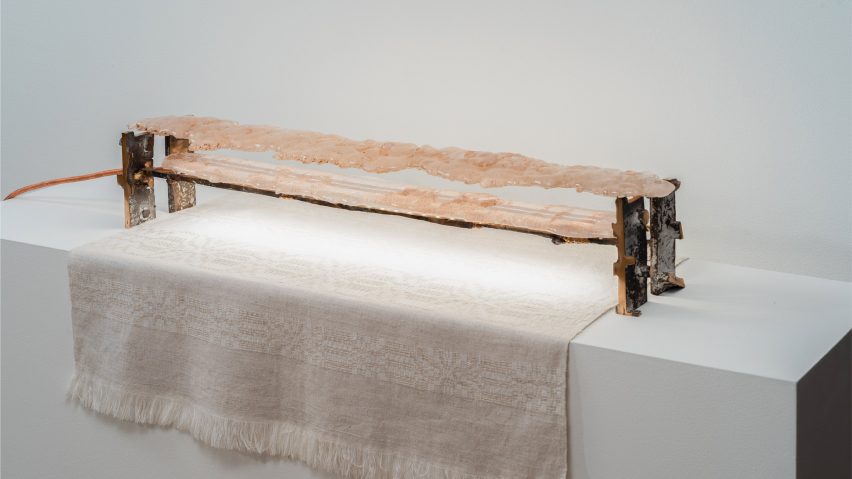
Thirteen student design projects from students at Vilnius Academy of Arts
Dezeen School Shows: a lighting collection made from glass and aluminium that explores memory is included in Dezeen's latest school show by students at Vilnius Academy of Arts.
Also included is a chair designed for use during sex that references the appearance of skin and a textiles project exploring mythology through the use of copper wire.
Vilnius Academy of Arts
Institution: Vilnius Academy of Arts
School: Vilnius Academy of Arts
Courses: Graphic Design BA, Visual Communication Design MA, Fashion Design BA, MA, Interior Design BA and Design BA, MA.
Tutors: Dainius Bendikas, Aistė Bankauskaitė, Egidijus Valentinavičius, Mantas Lesauskas, Marius Žalneravičius, Kristė Kibildytė-Klimienė, Laura Malcaitė, Justinas Dūdėnas,Renata Maldutienė, Tojana Račiūnaitė, Deividas Juozulynas, Juozas Brundza and Neringa Poškutė-Jukumienė
School statement:
"Vilnius Academy of Arts (VAA), founded in 1793, offers dynamic design programs across faculties in Vilnius, Kaunas, Klaipėda and Telšiai.
"The academy provides undergraduate and postgraduate courses in design, graphic design, fashion design and interior design.
"Students benefit from a vibrant artistic environment, state-of-the-art facilities and expert faculty guidance.
"The programs emphasise hands-on projects, interdisciplinary collaboration, and industry connections, fostering artistic expression and practical skills.
"Graduates are well-prepared to excel in the global design market, contributing to contemporary trends and addressing real-world challenges with creativity and vision."
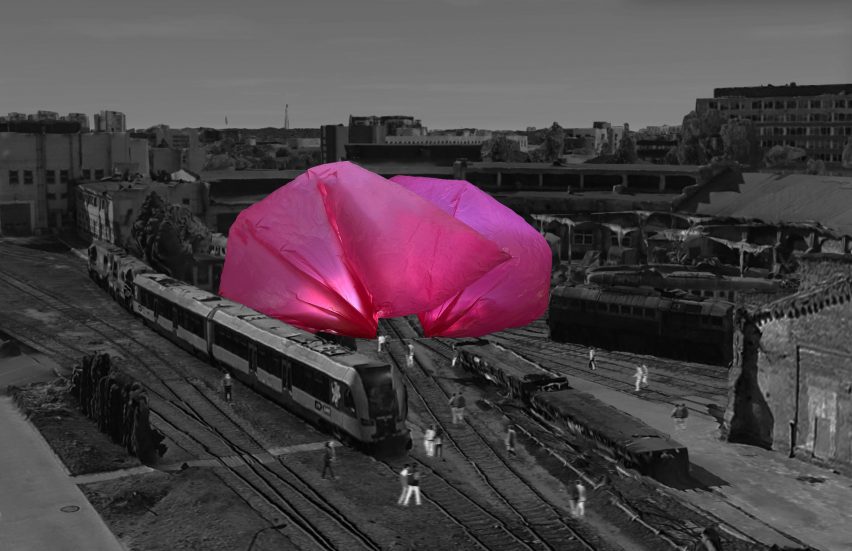
Ephemeral Night Club by Unė Jonynaitė
"Cultural night spots with music and dance are essential for people to get away from the tedium of everyday life and problems, to make social connections and to experience the city.
"The nightclub 2C addresses the lack of cultural inspiration in the city and the unusual ways of overcoming the city's public spaces by creating a performative environment.
"The design principle is based on inflatable architecture technology, which allows the nightclub to appear in different places in different forms, thus creating an ephemeral impression.
"The choice of the locations analysed is determined by the desire to demonstrate the principle of the object's operation in different architectural contexts: the urban fringe, the city centre and industrial spaces.
"As a result, we can see that the choice of such technology in the design of a nightclub creates a provocative architectural atmosphere, each time taking on its own unique form."
Student: Unė Jonynaitė
Course: Interior Design BA Vilnius Faculty
Tutor: Assoc Prof Laura Malcaitė
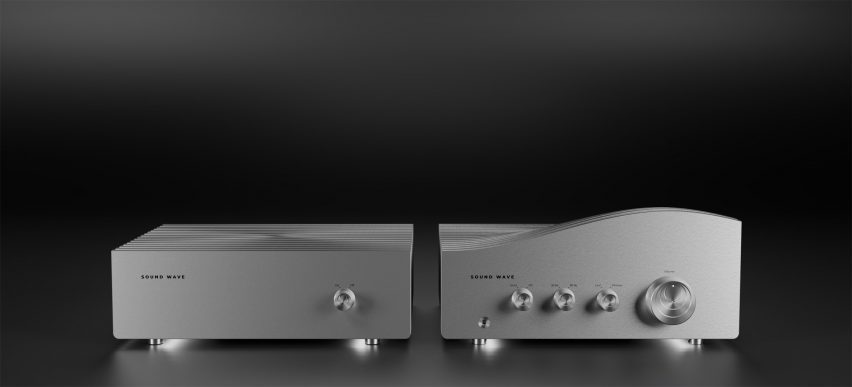
Image of Audio Equipment "Sound Wave" by Natas Darulis
"The theme of this design project is creating a distinctive image for audio equipment.
"The main objective was to design a unique set of audio components for Reed: an optical head, an amplifier and a power supply, aligning with the manufacturer's style and targeting a specific audience.
"Analysis of contemporary audio design revealed that most products feature standard, repetitive rectangular housings – to deviate from this trend and achieve a unique design, the concept of a sound wave was developed.
"This choice links the product's function to its aesthetic, creating seamless harmony.
"The sound wave idea is realised through a segmented structure, where each segment has a unique shape, forming a coherent wave image.
"This motif, applied to all three components, ensures a visually appealing and harmonious design, reflecting Reed's visual identity and meeting the target audience's expectations."
Student: Natas Darulis
Course: Design (BA) Kaunas Faculty
Tutor: Assoc Prof Egidijus Valentinavičius
Email: natasdesign22[at]gmail.com
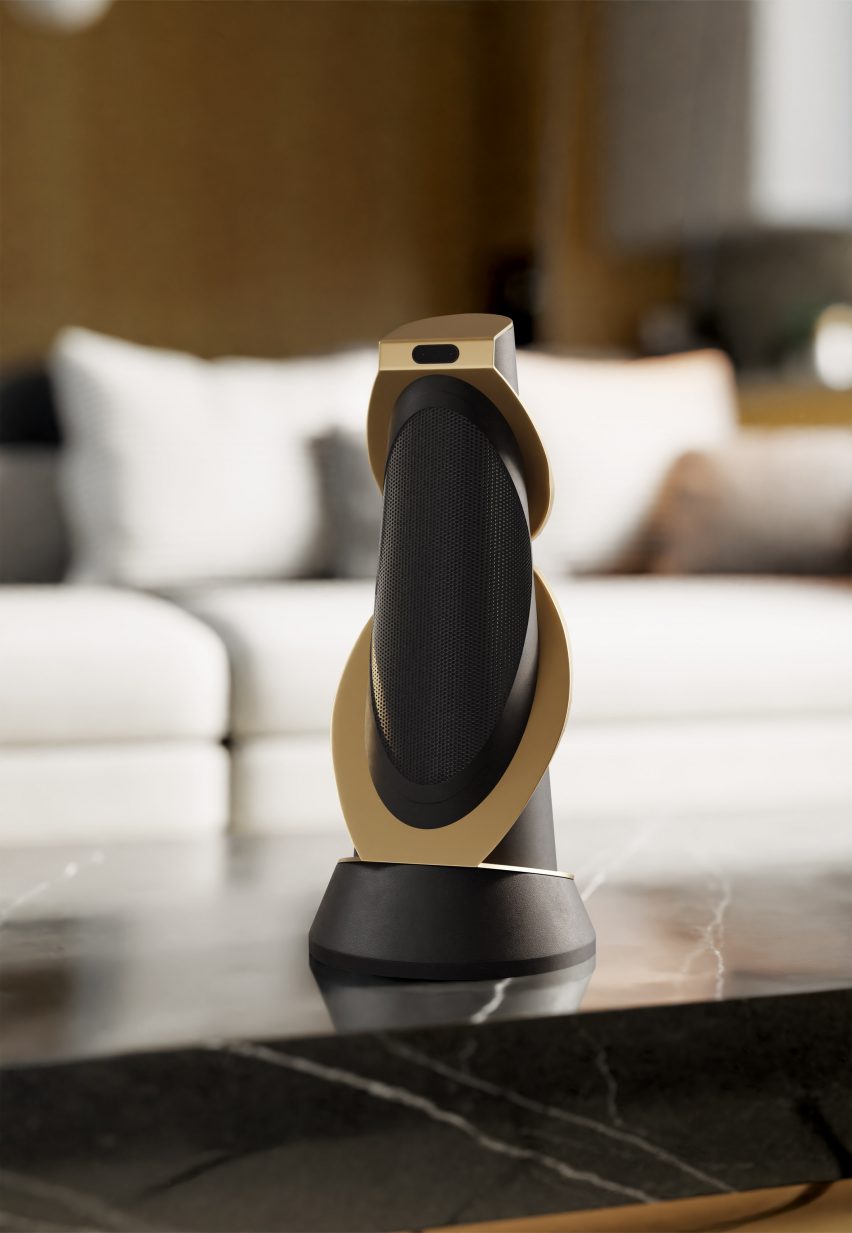
Design of Audio System 'Vertere' by Herkus Kuisys
"Vertere is a speaker featuring a minimalist and aesthetically clean design that complements any home decor with its sleek, modern appearance.
"A standout feature of this speaker is its 180-degree rotation capability, allowing you to direct sound precisely where you want it, ensuring optimal audio distribution throughout your space.
"Vertere also incorporates hand gesture recognition technology, offering a futuristic and intuitive way to control its basic functions.
"With simple hand movements, you can adjust the volume, skip tracks and manage playback, eliminating the need for traditional buttons and enhancing the overall user experience.
"Additionally, Vertere offers a range of personalisation options prior to purchase, ensuring the speaker not only delivers exceptional sound quality but also aligns perfectly with your personal taste and home style."
Student: Herkus Kuisys
Course: Design (BA) Kaunas Faculty
Tutor: Aistė Bankauskaitė
Email: herkusdesign[at]gmail.com
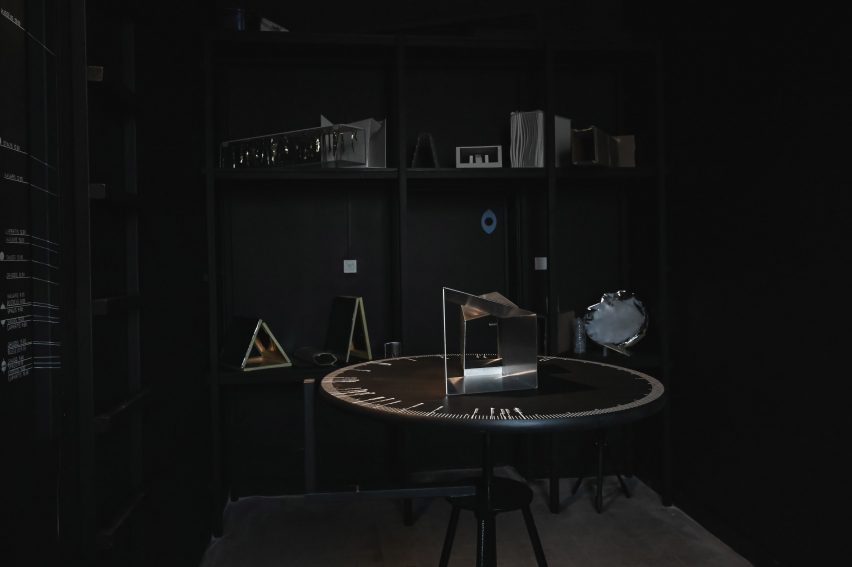
Light Angle by Lukas Dereškevičius
"The potential for natural light absorption in space is being examined to address the problem of excessive use of artificial light sources.
"Hypotheses about how to control light are explored through speculative sketches and practical experiments, with prototypes created to collect, direct and disperse light, and the results analysed for effectiveness.
"This research aims to introduce students to the possibilities of applying sunlight in interior spaces – solutions are sought for directing rays into north-facing rooms.
"An alternative light source is constructed to simulate different seasons and times on cloudy days.
"These applied solutions enable the experimental room to utilise natural light effectively."
Student: Lukas Dereškevičius
Course: Interior Design BA Vilnius Faculty
Tutor: Justinas Dūdėnas
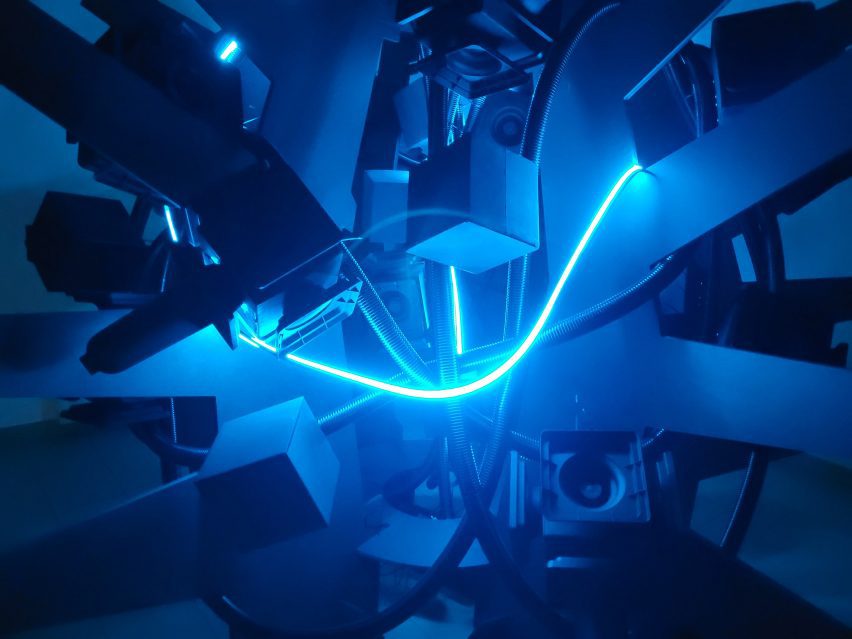
Interactive acoustic noise audiovisualisation installation 'KAM – 24' by Audrius Deikus
"Visual communication is an informative tool that has always been essential for the optimal functioning of society – it represents a synergy between the 'meta-speaker' – the visual communication expert – and the structure or material collected by the researcher.
"The aim of this synergy is to create contextually effective communication between users and the phenomenon in question – in today's digital age, noticeable issues arise regarding the dissemination or user reach of primary research material.
"A possible reason for this is the discrepancy in content production and delivery agendas between authentic primary sources and the tertiary-quaternary varieties of content dominating the media network.
"In ecological and environmental contexts, the spread of acoustic noise pollution exacerbates communicative trends of dissemination that encourage decontextualisation and misinformation, directly endangering the quality of human life.
"The installation 'KAM – 24' serves as an 'experiential resource' that ensures smooth and contextual communication with a wide audience, providing a multi-sensory experience through real-time audio-visualisation supplemented with light-shadow resolution – unmasking and revealing the true extent of the properties of acoustic noise pollution."
Student: Audrius Deikus
Course: Visual Communication Design MA Vilnius Faculty
Tutors: Associate Prof Marius Žalneravičius and Dr Kristė Kibildytė-Klimienė
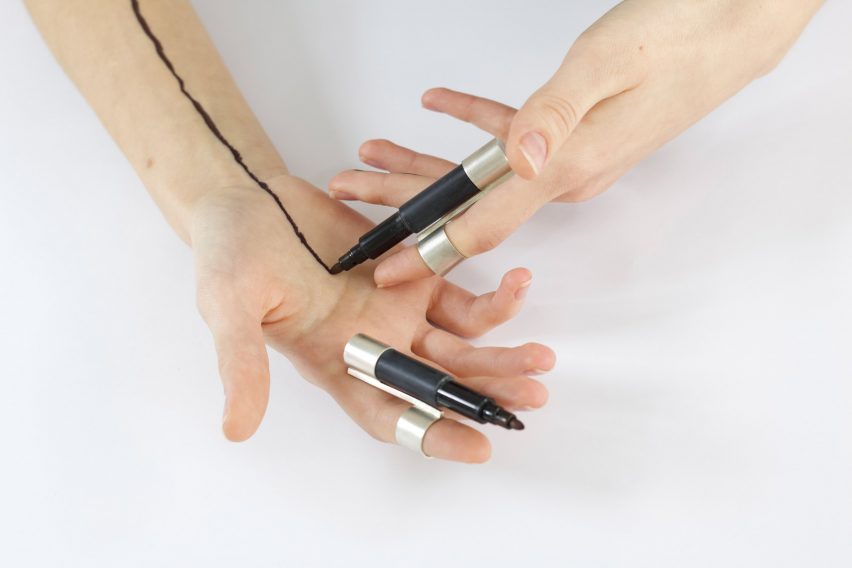
Permanent by Rugilė Titaitytė
"The artwork explores the contrast between the temporary nature of life and the eternity beyond, highlighting human existence in both realms.
"This is expressed through variations in line expressions and the role of the body in the work.
"By emphasising the lifeline drawn on the body as something exalted, important and elevated, I aim to capture the viewer's attention.
"My performance seeks to encourage reflection on the temporality of life and the flesh, prompting contemplation of a deeper, often forgotten existential state – eternity.
"The performance itself becomes the most crucial aspect of the artwork, during which the piece is fully revealed as a piece of jewellery, transforming the relationship between the body and the line into a phenomenon of jewellery."
Student: Rugilė Titaitytė
Course: Metal Art and Jewelry BA Telšiai Faculty
Tutor: Associate Professor Neringa Poškutė-Jukumienė
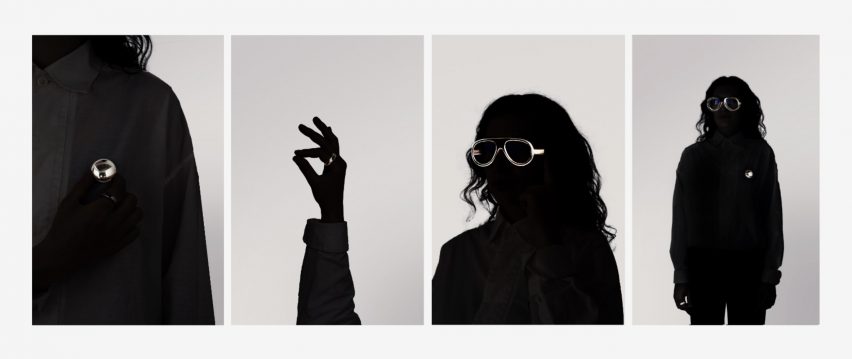
A collection of wearable computers for multimodal interaction with artificial intelligence by Povilas Grigas
"Amulets – rings, pendants, glasses – are wearable mixed reality computers that engage all eight human senses and enable natural, multimodal interaction with artificial intelligence.
"These intentionally familiar objects, designed to replace smartphones and desktop computers, function as three levels of immersion.
"They offer a break from screen-based existence and enable genuine human connection, which has been slowly eroding over the past decade."
Student: Povilas Grigas
Course: Design BA Vilnius Faculty
Tutor: Associate Professor Deividas Juozulynas
Email: povilas[at]grigas.co
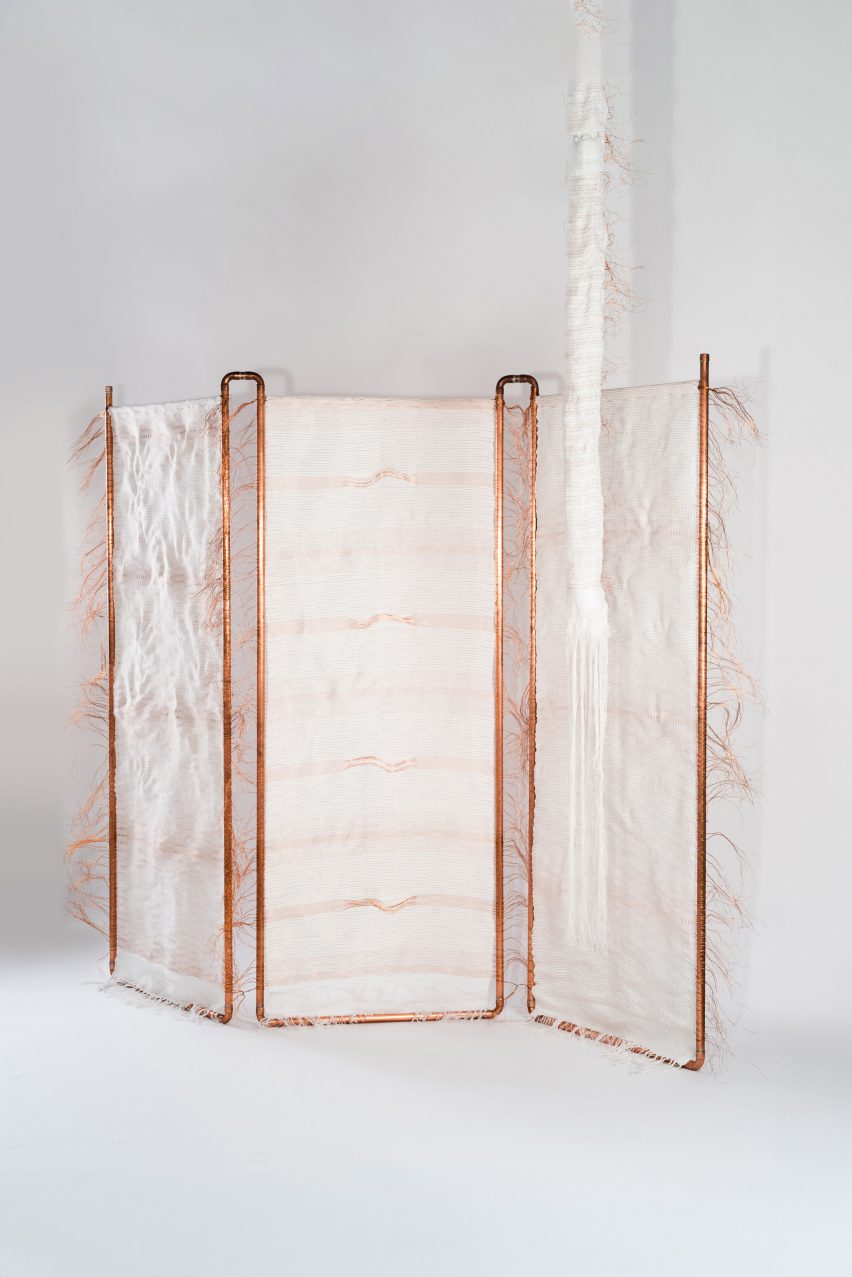
Integration of myth and ritual in creating three-dimensional textile objects by Lidija Ziepaltaitė
"This project aims to reveal the importance of myth in the history of human formation, emphasising mythology as a source of education.
"In parallel with the analysis of myths, an object – a screen – is being created, and the work explores the interaction of myth as a phenomenon with ritual and textile creation.
"The three-dimensional textile – woven with copper wire – in the screen has the property of retaining the shape impressed upon it, thereby narrowing the boundary between the two worlds: the mythical and the real.
"The narrative emphasises the symbiotic relationship between myth, ritual and materiality, uncovering their impact on human psychology and the development of societal structures."
Student: Lidija Ziepaltaitė
Course: Design BA Vilnius Faculty
Tutor: Assoc Prof Mantas Lesauskas
Email: lidijazie[at]gmail.com
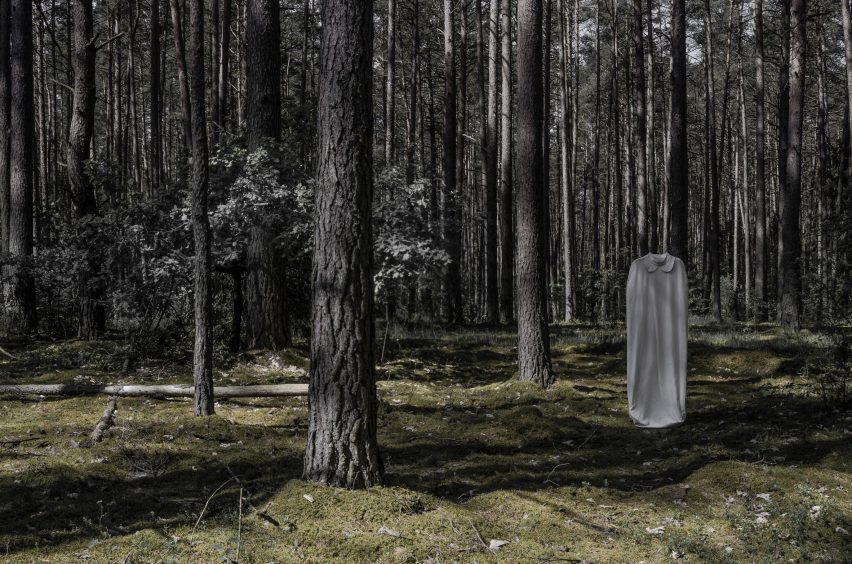
A new clothes of death design concept 'Passing' by Vilma Mackevičienė
"This master's thesis research aims to create a new design concept for the clothes of death.
"The research sought answers about the design of burial clothes from traditional and contemporary perspectives – ancient Lithuanian, pagan and catholic funeral traditions and burial attire were examined.
"The search for a new design concept examines how burial garments are reflected in cultural, religious and ideological beliefs about death and the afterlife.
"This research discusses how technological progress and shifts in values are changing the way of thinking about burial traditions.
"An important task was set to find a balance between traditional, contemporary and individual needs.
"A new clothes of death design concept was created – 'Passing' is an invitation to unfold new perspectives of thinking in the field of funeral garment design."
Student: Vilma Mackevičienė
Course: Fashion Design MA Vilnius Faculty
Tutors: Prof Dr Renata Maldutienė and Dr Tojana Račiūnaitė
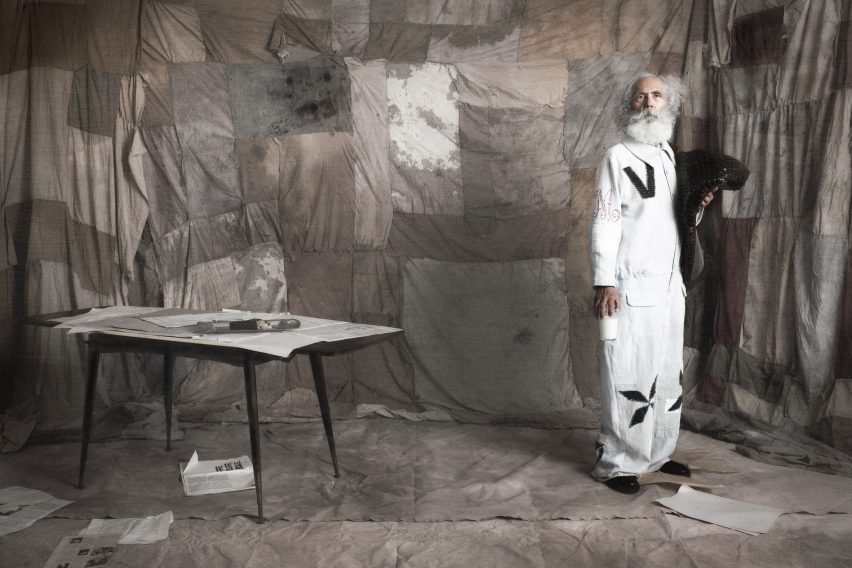
At the Table by Viltė Savickaitė
"In this project, I delve into innovative ways of representing fashion by merging two distinct forms of artistic expression: fashion design and food production/recipe development.
"The table, used as a metaphor, becomes the central axis and inspiration for this work, with six different dairy products metaphorically linked to six different social roles from my perspective.
"Milk, as a metaphor, symbolises equality: it is consumed by both the judge and the craftsman, serving as an elixir of life essential for every newborn's survival, but as individuals grow, they gain the freedom to choose whether to drink milk or not.
"At my table, individuals of any role, origin, or social status can sit together, serving as a universal centrepiece.
"What role do you embody when you take a seat at this table? Are you genuine in it?"
Student: Viltė Savickaitė
Course: Fashion Design BA Vilnius Faculty
Tutor: Associate Professor Dainius Bendikas
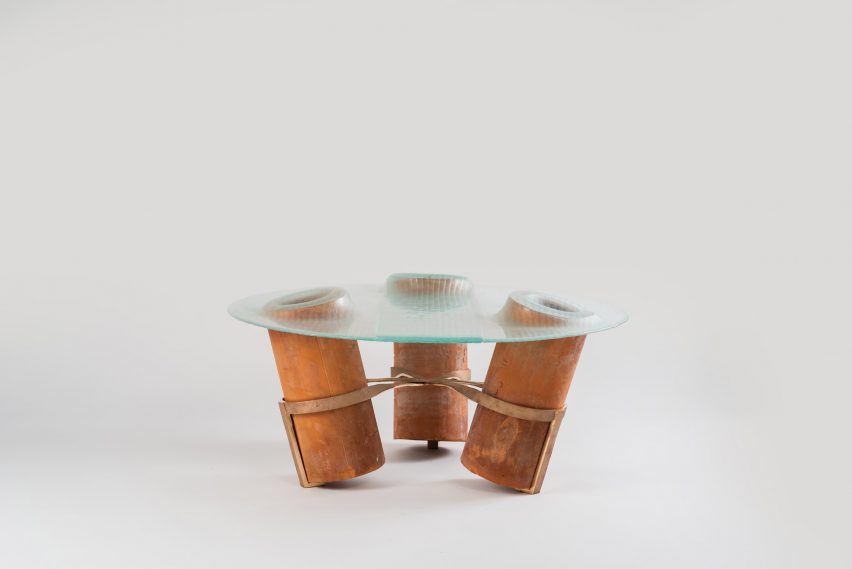
Reverences: the value of industrial waste in authorial design practice by Arnoldas Šliuževičius
"Reverences is an expression of searching for authorial design, reflected in a side table and two pendant light fixtures that, through materials, question the place of young creators in design society.
"This collection is the result of a rational yet intimate and non-linear study of found materials, giving them a new function and role through a modern design language.
"This trio of ceramic, glass and bronze pieces becomes a respectful curtsey, framing the multi-layered stories of the people who made those materials, and paying tribute to their lives and work."
Student: Arnoldas Šliuževičius
Course: Design BA Vilnius Faculty
Tutor: Associate Professor Deividas Juozulynas
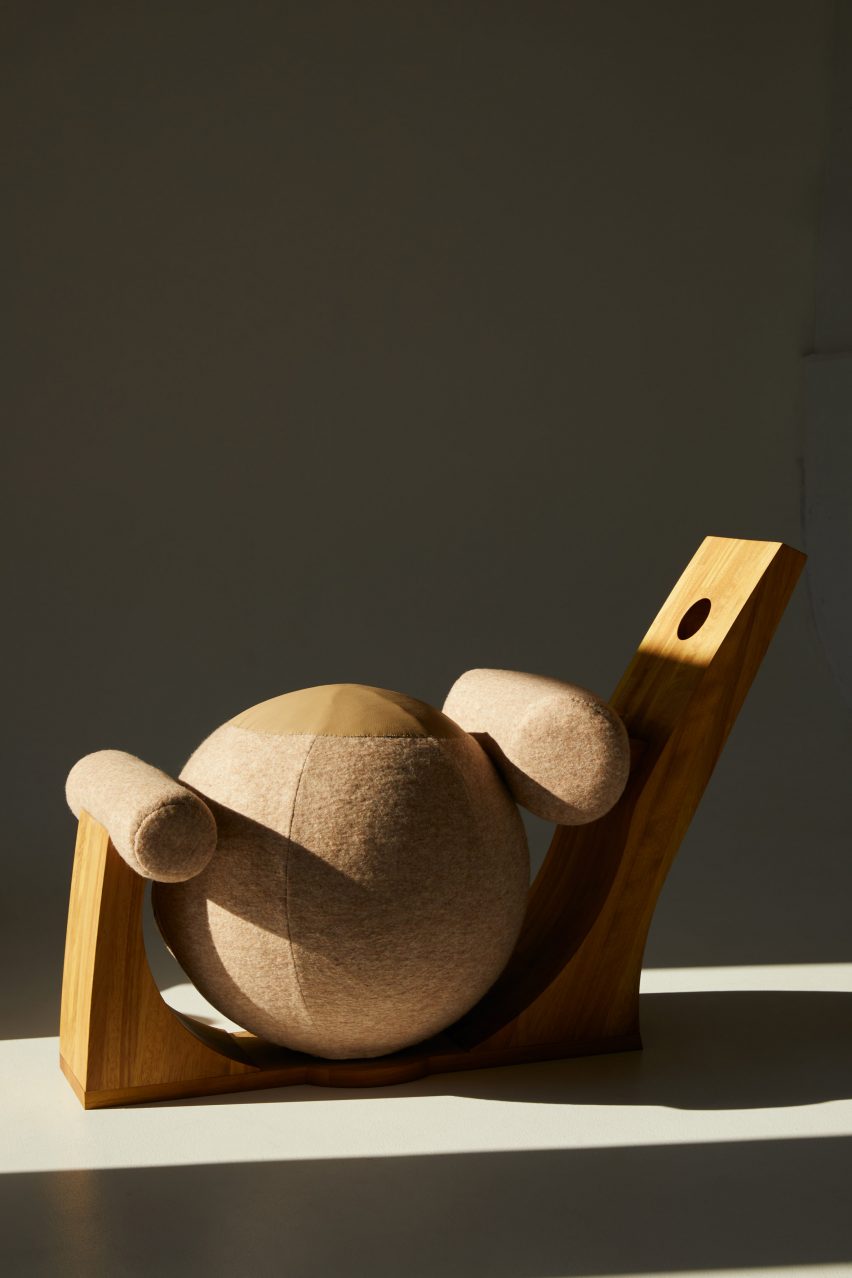
Auxiliary Sex Furniture in the Living Room by Paulina Bradūnaitė
"This piece of furniture invites designers to rethink sex – not just as an act of pleasure or reproduction, but as a dialogue.
"With this view, we can include those who might not reproduce or enjoy genital sex – seeing it as a form of communication invites every member of society who is worthy of connecting.
"This also prompts us to reconsider the primary organ for sex – why should it be genitals instead of skin, which covers a much larger part of our body and is full of neurons?
"This is why the aesthetics of this piece are based on the qualities of skin, mimicking the patterns of blood and veins flowing under our skin, as well as the oiliness and roughness of body hair.
"By designing sex items based on dialogue and skin, we can create a more diverse, happier society where people are judged on their ability to form romantic connections and their impact on society, rather than on their physical appearances."
Student: Paulina Bradūnaitė
Course: Design MA Vilnius Faculty
Tutors: Assoc Prof Mantas Lesauskas and Prof Juozas Brundza
Email: paulina.bradunaite[at]gmail.com
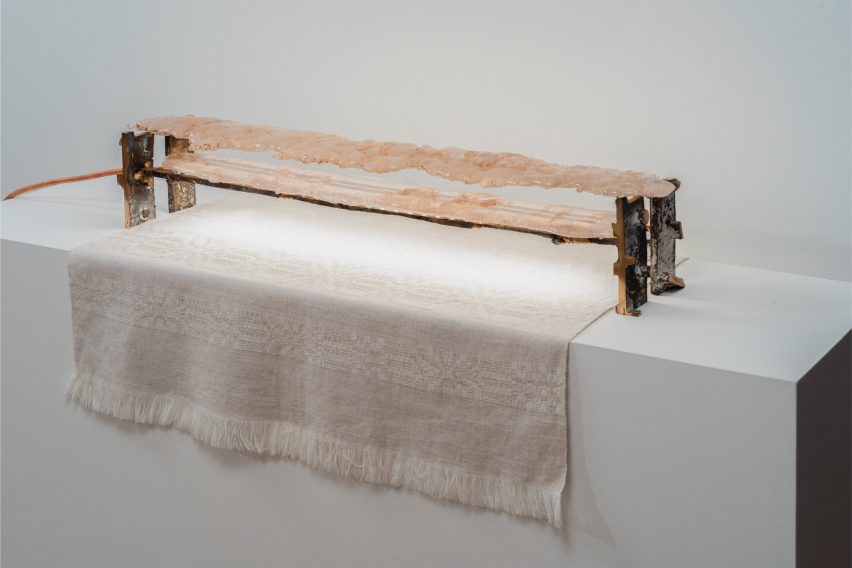
Epiphanies: Applying the method of autoethnography to design solutions by Vesta Rugilė Nausėdaitė
"Reflecting on my emerging design practice, I question what objects should be created in response to a mutilated and endangered nature.
"Recognising that reflection, emotion and contemplation give objects lasting value, I undertake an autoethnographic investigation, delving into personal, family and collective memory.
"This research inspires creative expression and reflects on ecological catastrophes caused by irresponsible consumption, applying these reflections and emotions to design.
"Drawing from stories, artefacts, and places of memory, I use childhood beach sand as a medium, casting glass and aluminium into modern-day fossils illuminated within light fixtures.
"The project culminates in 'Epiphanies,' a collection of light fixtures expressing the experiences, people and memories that have shaped me, contextualising my influences and paving the way for future design work."
Student: Vesta Rugilė Nausėdaitė
Course: Product Design (BA) Vilnius Faculty
Tutor: Assoc Prof Mantas Lesauskas
Email: rugilevesta[at]gmail.com
Partnership content
This school show is a partnership between Dezeen and Vilnius Academy of Arts. Find out more about Dezeen partnership content here.